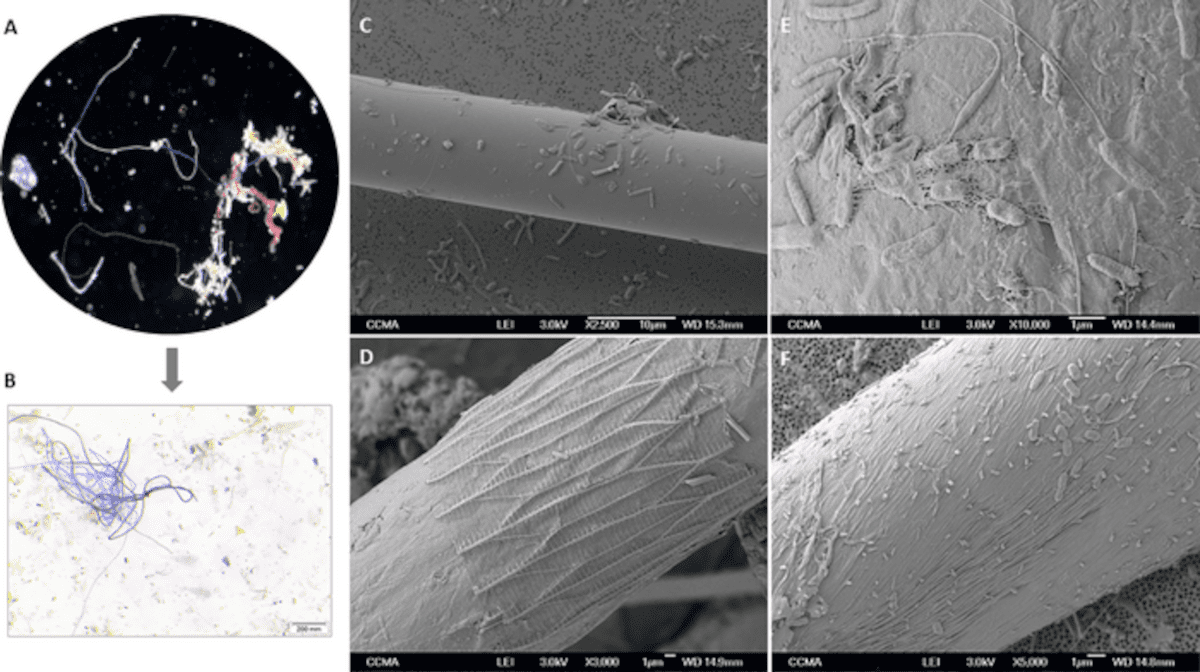
Almost 200 species of bacteria colonize microfibres in the Mediterranean Sea, including one that causes food poisoning in humans, according to a new study published in the open-access journal PLOS ONE.
Synthetic and natural microfibres from plastic pollution, the textile industry and fishing activities have increased dramatically in the environment, becoming the most common type of particles in the ocean. These microfibres likely pose a threat to aquatic ecosystems and human health, because once they become colonized by microorganisms, they smell like food and are consumed by marine organisms. Due to their persistence, the microfibres likely build up in marine organisms as they move through the food chain.
To find out what types of bacteria live on floating microfibres, a group – led by Maria Luiza Pedrotti of Sorbonne Université – used advanced microscopy techniques and DNA sequencing to identify microorganisms living on microfibres collected from the northwestern Mediterranean Sea. They discovered that more than 2,600 cells on average live on each microfibre. These cells belong to 195 bacterial species, including Vibrio parahaemolyticus, a potentially dangerous bacterium that causes food poisoning from seafood.
This new study is seemingly the first to report the presence of pathogenic Vibrio species on microfibres in the Mediterranean Sea. The discovery is important for assessing health risks, because the bacterium’s presence can be a threat to bathing and seafood consumption.
The study also raises the question of the environmental risk of microfibres. The increasing amount of persistent plastic waste in the environment may be transporting dangerous bacteria and other pollutants throughout the ocean, thus increasing the risk of contamination compared to short-lived natural particles, such as wood or sediments.
Maria Luiza Pedrotti adds: “The role of climate change also has an influence on the spread of this potentially pathogenic bacteria. Studies have shown that temperature has a significant correlation with the increase of Vibrio spp and the emergence of infections. At the time we found this vibrio, coastal summer temperatures ranged from 25.2-26.5°C, while this year, at the same location, they reached 29°C.”






